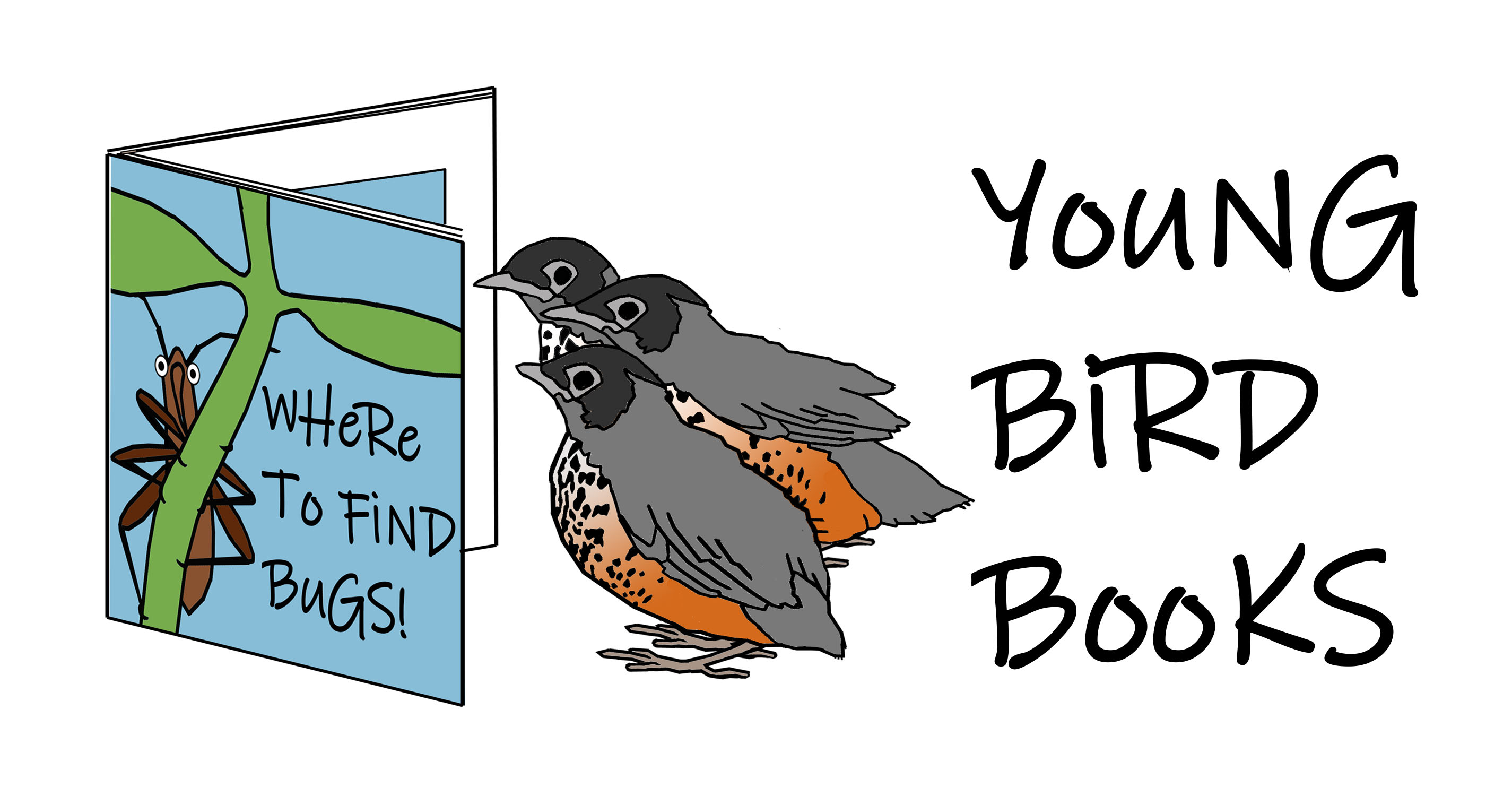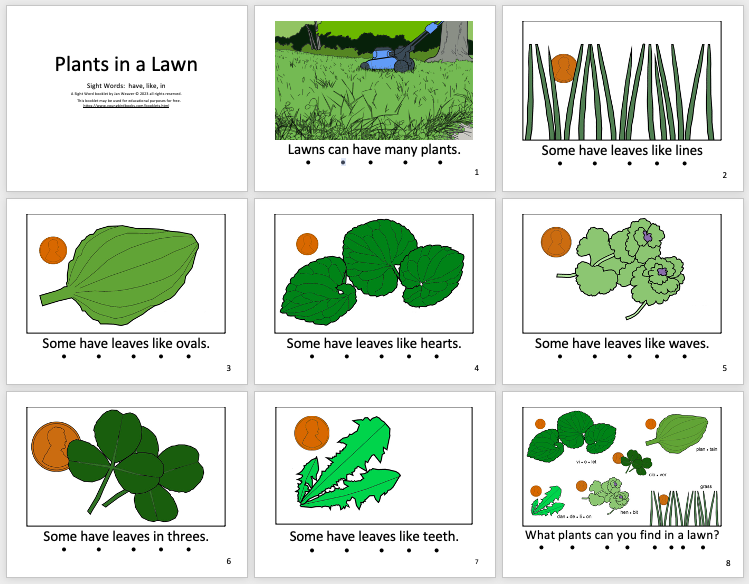Plants in a Lawn
Plants in a Lawn PDF Black and White (line drawings, 4 pages to a sheet)
Plants in a Lawn PDF Color (colored-in drawings, 1 page to a sheet)
Sight Words: have, in, like
How are leaves the same? They are green and flat. Both traits help them gather carbon dioxide and sunlight. Together with water from their roots, they have all three things they need to make food.
Why are leaves different shapes? Like a recipe for a cake, living things have a recipe for how they are made. It is written in a code called dna. The dna of a leaf controls the shape it has, so we know how leaves get to be oval or heart-shaped. However, dna was passed down from each plant's parents, grandparents, and so on, from so long ago that no one knows, not even scientists, why one plant got dna for oval shapes and another for heart shapes. It is a still a mystery! Even so, some plants are flexible, and can change their size and their shape depending on sunshine, temperature, water, and even by what might be eating them.
Why is there a penny in each picture? For scale. The larger the penny, the smaller the leaf.
What other questions can you think of?
Use the booklet with the lesson Plants in Our Lawn or develop your own lesson using the relevant NGSS Science Standard
NGSS Science Standard Learn more about the NGSS Science Standard
- DCI: K-LS1-1 Use observations to describe patterns of what plants and animals (including humans) need to survive. - Plants need the carbon dioxide in air, water from the soil, and sunlight. Their leaves are adapted to get the right amount of sun and carbon dioxide to meet their needs.
- CCC: Patterns in the natural and human designed world can be observed and used as evidence.
- SEP: Use observations (firsthand or from media) to describe patterns in the natural world in order to answer scientific questions.

